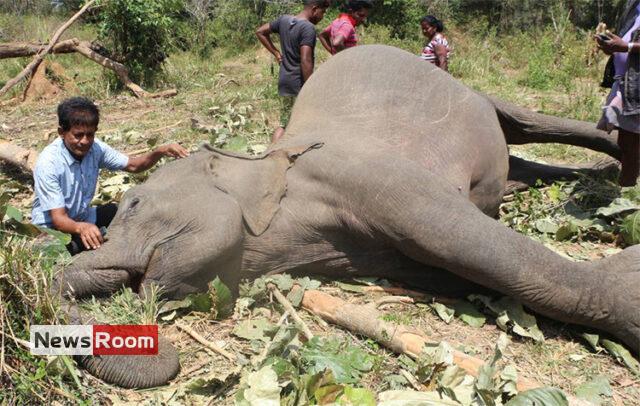Sri Lanka recorded at least one elephant death a day in the first quarter of 2023, nearly half of them due to human causes, putting the country on track for a record death toll from human-elephant conflict, said a report published by Mongaby yesterday.
It quoted experts as having said that various approaches adopted since 1959 to tackle the problem have only aggravated the issue or failed to solve it.
A national plan formulated in 2020 to mitigate the problem has not been fully implemented due to a lack of funding. Wildlife conservationists say that up to 70% of wild elephants could die unless effective measures are urgently adopted.
On average one elephant has died each day in Sri Lanka in the first three months of this year, with nearly half of those deaths due to human causes. This escalation of the perennial problem of human-elephant conflict on the island has prompted calls for urgent solutions to save this endangered and iconic species.
The Department of Wildlife Conservation (DWC) recorded 151 deaths of Sri Lankan elephants (Elephas maximus maximus) between Jan. 1 and April 28. Of these, at least 67 were due to human intervention, including shooting deaths (38) and electrocution caused by electric fences (23).
Six elephants died after eating so-called hakka patas (jaw bombs), improvised explosive devices concealed in food bait that detonate when bitten. The devices are used by farmers to keep animals from their crops.
Ravi Corea, founder and president of the Sri Lanka Wildlife Conservation Society (SLWCS), said he fears Sri Lanka might be on track to set a new unwanted record for the highest number of elephant deaths in a single year.
Elephant deaths last year hit an all-time high of 433, while human fatalities from these conflicts was also a record 145.
“Every time the department sends out these statistics of elephant deaths, there is always an increased hue and cry. This is a good sign. But unfortunately, that outcry subsides with time,” Corea told Mongabay.
The government estimates the population of Sri Lankan elephants, a subspecies of the Asian elephant (Elephas maximus), at about 7,000. But wildlife conservationists suggest the real number may be far lower, given the rapid loss of the animal’s habitat and the rising death toll from the conflict with humans.
Sri Lanka has long strived to find a balance between its human and elephant populations amid limited land and resources. But various approaches adopted since 1959 to mitigate human-elephant conflict have only aggravated the problem, according to Corea, who works closely with villagers on the issue.
He blamed this on the authorities’ failure to address the factors that underlie the problem. One of these factors, he said, is the “flawed” process by which authorities allocate land for development projects and other activities like farming.
“Every time there is a development program, they go and grab elephant habitats. Where are these animals going to go? Land settlement schemes are the main drivers of this issue,” Corea said.
“Some elephant habitats are now towns, villages, paddy fields, cultivations, harbors, airports and cricket stadiums. We need to carefully assess and identify the remaining habitats and declare them protected areas,” he said.
The government’s own data underscore this overlap: a national report shows that humans and elephants inhabit the same landscape across 44% of Sri Lanka’s terrestrial area. And 70% of existing elephant range falls within areas where humans live, the report adds.








